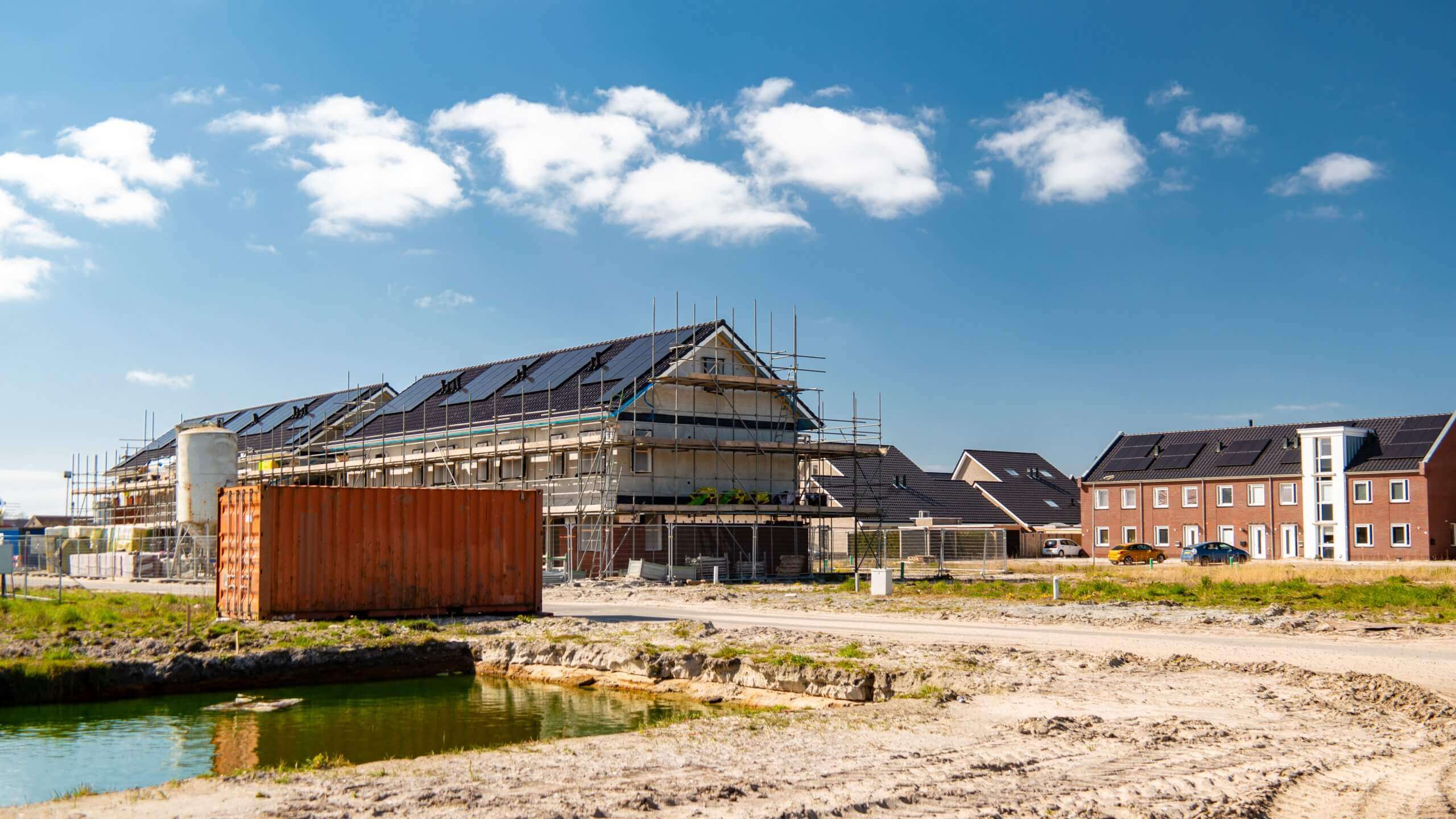Living Horizon Scanner: March 2025
25th March 2025
“From sweeping changes to the National Planning Policy Framework, through streamlining infrastructure planning, unprecedented focus on nature recovery and investment in affordable housing, to imminent implementation of a reimagined commonhold, the living sector is experiencing one of the most ambitious eras of reform for many years.”


Build
Industry News – Is your business prepared for an ambitious era of reform?
Developing a new commonhold model
The government has published The Commonhold White Paper, explaining a proposed new commonhold model for England and Wales. The government is “determined” that commonhold become the standard tenure – an intention that will be supported by a ban on new leasehold flats. It has committed to publishing a draft bill later in 2025, so that property professionals and lenders can prepare for the delivery of commonhold at scale before the end of this Parliament.
Digitising property data – what’s the best approach?
The government has pledged to digitise property information to streamline and speed-up the homebuying process, and to decrease the number of transactions collapsing. Proposed reforms will be to fully digitise key information such as building control and highways information, and to introduce protocols for accessing, sharing and verifying data. A 12-week project has been launched to identify the design and implementation of agreed rules on data for the sector, and HM Land Registry will lead 10-month pilots with several councils to identify the best approach to opening up and digitising data.
Have your say on the proposed Land Use Framework
The government is consulting on development of a Land Use Framework to support decision-making on guaranteeing long-term food security, supporting development, achieving targets on nature and climate, and supporting economic growth. The consultation is open until 25 April 2025.
The Department for Energy Security and Net Zero has published a report on the future heating and cooling needs of the UK housing stock.
The Scottish Government has published the response to its 2023 Energy Performance Certificate (EPC) reform consultation, confirming plans to introduce revised EPC regulations in Parliament in 2025.
A report has found that local authorities in the South East and East of England may not be able to deliver 39% of the additional homes they’ve been asked to build each year due to water scarcity. We’ve reported previously on environmental and commercial concerns associated with the water crisis.
The government has published The English Devolution White Paper which proposes significant plans to make devolution/local decision-making the default setting across a range of policy areas. Measures include plans for new local ‘strategic councils’ with the ability to guide infrastructure and development projects across areas such as housing, transport and skills.
Planning urban regeneration
The government has unveiled plans to deliver urban regeneration. More than 100 proposals, from across every region in England, have already been submitted for their towns to benefit. Each new town will have the potential to provide at least 10,000 homes.
In related news, the New Towns Taskforce has set principles on what the next generation of new towns will deliver and is due to provide its recommendations on locations for the creation new settlements by July 2025. Publication of the New Towns Code is also awaited.
Can 3D printing reduce your carbon footprint and costs?
Northumbria University has announced new 3D construction printing technology that can print concrete structures faster, cheaper and more sustainably than conventional methods. 3D concrete printing boasts time, energy, resource and money saving credentials, with anecdotal evidence suggesting it can enable up to 60% reduction of construction waste, 70% reduction of production time, and 80% reduction of labour costs, compared to hands-on construction projects.
Also in relation to 3D printing in construction, Scientists at Nanyang Technological University, Singapore have developed a 3D concrete printing method that captures carbon, demonstrating a new pathway to reduce the environmental impact of the construction industry. The innovative method aims to significantly reduce the carbon footprint of cement through lower material usage, reduced construction time, and labour requirements.
The Home Builders Federation has called on the government to introduce common standards for the adoption of roads, saying inconsistent approaches by public authorities and rising costs are making it “impossible for businesses to plan and deliver housing”.
A Public Accounts Committee report published in January 2025 calls on the Ministry of Housing Communities and Local Government (MHCLG) to set clear targets for affordable homes. The hope is to stimulate new impetus for investment in the affordable housing market.
2025 will continue the staged implementation of the Leasehold and Freehold Reform Act 2024 (LFRA 2024). Removal of the 2-year ownership requirement before applying for enfranchisement or a lease extension, and changes to the right to manage, are in force from January and March 2025 respectively. Consultations later in 2025 will consider changes to service charges, legal costs, and consumer protection provisions.
MHCLG is considering consultation responses in relation to introducing permitted insurance fees for landlords, freeholders, and property managing agents, pursuant to measures in the LFRA 2024 which address concerns over opaque and excessive charges imposed on leaseholders for building insurance. The responses received will inform secondary legislation to define the parameters of permitted fees.
New rights for renters
The government has announced that Awaab’s Law will come into force in October 2025. It will require social landlords to fix dangerous damp and mould in set time periods and repair all emergency hazards within 24 hours.
The Renters’ Rights Bill is expected to become law during the first half of 2025. MHCLG has published an impact assessment for the Bill, evaluating the impact of its proposed measures on businesses and broader society. Key reforms include abolishing section 21 ‘no fault’ evictions, introducing a new Private Rented Sector (PRS) Database and Ombudsman, and extending the Decent Homes Standard and Awaab’s Law to the PRS.
Residential rates of Stamp Duty Land Tax are changing on 1 April 2025.
In Wales, an amendment to Land Transaction Tax in 2025 will deny multiple dwellings relief where the subsidiary dwelling exemption applies.
The Competition and Markets Authority (CMA) is extending its investigation into anti-competitive conduct until May. An initial probe into 7 housebuilders was carried out in December, but the CMA is continuing to investigate as it “has not reached a view as to whether there is sufficient evidence of an infringement or infringements of competition law for it to issue a statement of objections to any party under investigation”.
A new version of the RICS service charge standard is due to be launched in summer 2025.
The RICS is consulting on the responsible use of AI for professional standards.
£350 million funding for affordable housing
The government has announced a £350 million injection to boost affordable housing: £300 million to the Affordable Homes Programme and £50 million to the Local Authority Housing Fund. In Wales, the Welsh government has committed an additional £10 million to help kickstart the development of new affordable housing schemes.
The National Wealth Fund has announced an initial £150 million in financial support to help registered providers retrofit their social housing stock in the UK. The Fund aims to grow this figure to £250 million over the next six months. (These investments are in addition to the £750 million, confirmed in financial guarantees to Barclays and Lloyds Banking Group in October, to enable the banks to make available £1 billion in loans to social landlords for retrofitting).
A commercial tenant has brought a High Court claim against its landlord, which could have far-reaching implications across commercial real estate and the living sector. Picturehouse claims that Criterion arranged for its insurers to charge enhanced commission on insurance which it passed on to the tenant and then recovered via “insurance rent”. Picturehouse claims this can’t be justified and should be claimed back. Picturehouse also argues that fire sprinklers in the building were turned off in 2015 because of building safety renovation works. That led to the insurer ramping up the premiums and increasing the excess to more than £1 million. It claims that leaseholders shouldn’t be obliged to pay insurance increases caused by fire safety issues.
“The disparate phenomena of Covid lockdown arrears claims, commission claims in the financial and energy sectors, and building safety appear to have combined to prompt a new type of claim, which could affect commercial and residential properties up and down the country – enhanced insurance claims. The Picturehouse claim will be one to watch.”


Homes England
Homes England has launched the Section 106 Affordable Housing Clearing Service – a database of affordable housing opportunities across England (excluding London).
Homes England and Invest & Fund have announced an expansion of their Lending Alliance, from £25 million to £47.5 million and to March 2030, to reinforce their commitment to supporting small and medium-sized enterprise (SME) developers.

Planning
National Planning Policy Framework updates
The government published a revised version of the National Planning Policy Framework (NPPF). The new version is intended to assist the government’s ambition to facilitate the building of 1.5 million new homes, by changing the approach that local authorities must take in considering certain residential planning issues. Key changes (non-exhaustively) include:
- reintroducing mandatory housing targets and the obligation to demonstrate a 5-year housing supply pipeline
- introduction of the new “grey” belt
- new golden rules which will, in some cases, permit development in the green belt
- extended provisions relating to climate change impact
- strengthened policy relating to critical national infrastructure such as data centres and logistics
- provisions for planning conditions that would set out the maximum amount of time a developer has to build out their project and measures requiring developers to commit to a build out trajectory upfront and report on delivery against it.
On 24 February 2025, MHCLG updated the planning practice guidance to reflect the changes and, on 27 February, the government published its response to its consultation on the proposed reforms.
Introducing the Planning and Infrastructure Bill
The Planning and Infrastructure Bill has been introduced in Parliament. It aims to streamline planning and speed up building. See this guidance for a helpful, comprehensive overview. Key points for the living sector include:
- Powers to improve efficiency and align with Ofgem/NESO electricity grid connection reforms
- Sub-delegation of setting of planning fees to LPAs; requirement that fees mustn’t exceed cost to LPA of determining that planning application and fees must be retained for the LPA’s relevant planning function
- New scheme setting out which planning functions should go to planning officers and which to committee; and committee members must take mandatory training before taking planning decisions
- Roll-out of Spatial Development Strategy
- Establishment of Nature Restoration Fund and Environmental Delivery Plans – a more strategic approach to discharge of environmental obligations on development
- Expanded, updated, more flexible use of development corporations
- Compulsory Purchase Order reform, including removal of hope value.
Planning reform announcement
On 26 January 2025, the Chancellor and Secretary of State for Housing, Communities and Local Government made a joint announcement on planning reform in the bid for growth. The announcement included confirmation that: measures will ensure applications for certain types of schemes in “key areas” such development at “high potential locations near commuter transport hubs” should be granted consent; the government is progressing with new Environmental Outcomes Reports, introduced by the Levelling Up and Regeneration Act 2023; and the government is reviewing the statutory consultee system (see below).
The government has announced it will consult on new plans to narrow the scope of statutory consultees in the planning process, and make the heads of “key” consultees report directly to the Treasury on their performance. The growth-focused further reforms this would:
- review the scope of all statutory consultees “to reduce the type and number of applications on which they must be consulted”. For example, organisations such as Sport England, Theatres Trust and The Gardens Trust will no longer be required to input on planning decisions, and the scope of other statutory consultees will be narrowed to focus on heritage, safety and environmental protection;
- clarify that local authorities should only be consulting statutory consultees “where necessary to do so”; and
- require that decisions “should not be delayed beyond the 21 day statutory deadline unless a decision cannot otherwise be reached or advice may enable an approval rather than a refusal”.
In December 2024, two consultations opened into the compulsory purchase system: On 19 December 2024, MHCLG published Compulsory purchase process and compensation reforms. This looked at proposals to make the process “cheaper, quicker and fairer” and closed on 13 February 2025. On 20 December 2024, the Law Commission published its own consultation on compulsory purchase as part of its review into modernising system. This closes on 31 March 2025.
Court of Appeal cases – key implications
On 30 January 2025, the Court of Appeal handed down its decision in Mead Realisations Ltd v Secretary of State for Housing, Communities and Local Government. The case related to the sequential test for flood risk, but the decision is relevant to all types of development. The case confirms that national planning policy and national planning guidance have equal status in decision-making.
In Test Valley BC v Fiske, the Court of Appeal has confirmed that there’s no restriction on using an application under section 73 of the Town and Country Planning Act 1990 (TCPA) to make “fundamental alterations” to a consented development. However, it is still necessary to ensure that the already well-established restrictions on using section 73 applications to change conditions attached to a permission are complied with.
Also on section 73, it’s expected that section 73B TCPA will be brought into force during 2025. It will enable developers to apply for variations of the description and conditions of an existing planning permission, provided that the varied development is not “substantially different” to the existing development.
The Court of Appeal is to hear a challenge against a ministerial statement restricting councils from setting more ambitious energy efficiency standards for new homes than national building regulations allow, in a case which focuses on how the Environmental Principles Policy Statement is interpreted.
Basildon Council’s Planning Committee have granted an outline planning application to deliver 250 units on land redefined as grey belt following publication of the new NPPF. The officer’s report can be viewed here.
The Prime Minister, published in Metro, has said that planning applications are expected to rise by almost 160% in 2025.
The Independent has reported that UK mortgage lending growth is set to double in 2025, as falling interest rates revive the market.
MHCLG has published the findings of the first Skills and Capacity Survey. The survey will be conducted annually, and results compared over time, to assess progress tackling capacity issues in local planning authorities.
A draft statutory instrument has been laid before parliament which will increase a wide range of planning application fees in England as from 1 April 2025. Sections 3 – 5 set out fee increases.
A written ministerial statement (WMS) published back in December 2023 said councils’ local plans should not go beyond minimum energy efficiency standards for new buildings. Campaign groups Rights: Community: Action and the Good Law Project challenged the WMS, but the High Court dismissed that challenge in June 2024. The climate campaigners have now won the right to bring their claim to the Court of Appeal. One to watch.
The government has published its Planning Reform Working Paper: Streamlining Infrastructure Planning; shortly followed by a press release on plans for removing blockers to the development of nationally significant infrastructure projects (NSIPs).
The Nature Restoration Fund – do you need to contribute?
In related news, infrastructure developers will no longer need to undertake site-by-site environmental mitigation measures before planning permission is granted, but instead will contribute to a new Nature Restoration Fund to fund larger strategic interventions to protect natural ecosystems.
Local Nature Recovery Strategies (LNRSs) are intended to set out priorities for nature’s recovery, map the most valuable existing areas for nature, and map specific proposals for creating or improving habitat for nature and wider environmental goals. The government has this week published long-awaited guidance on how the new strategies will interact with the planning system.

Biodiversity net gain, nature and climate impact
On 28 November, the government issued important updates to its guidance page relating to biodiversity net gain (BNG) credits and what local planning authorities should do when working with developers who wish to buy statutory BNG credits.
A year after the initial implementation of BNG, Carter Jonas has published research, Biodiversity Net Gain: Navigating the Evolving Market, exploring the impact of the change in the law on landowners, land managers, developers, local authorities and environmental organisations.
Housing developers in the UK will be able to more easily purchase biodiversity offsetting credits after the launch of a new nature-based nationwide marketplace.
Natural England has warned that a ‘non-legal’ BNG metric tool may be in circulation and has advised developers/contractors to ensure they are using the statutory calculation tool that is published on the government website.
A minister has confirmed, in a parliamentary debate, that the government will consult on applying the BNG requirement to nationally significant infrastructure projects. In related news, Nature minister Mary Creagh told the Environmental Audit Committee that DEFRA is reviewing whether BNG is working as it should. Creagh also stressed the importance of making sure that BNG units that are provided are protected from allegations of greenwashing.
The UK has this week published its National Biodiversity Strategy and Action Plan.
The Woodland Trust has published its Nature Emergency Scorecard, which reveals the actions taken by 395 UK local authorities to protect nature. The document reveals that only 1% of local authorities have committed to protect and manage 30% of their land for nature recovery by 2030, and just 8% have committed to embed nature’s recovery into all strategic plans and policy areas.
The Government, in its response “Accelerating to Net Zero” to the Climate Change Committee’s Progress Report, has said that it will launch a consultation in early 2025 into the standards required for domestic rental properties, and will consider extending the regime to cover the social rental market as well as the private rental market.
The Better Buildings Partnership has published a comprehensive guide to support and assist UK commercial real estate owners in applying the Taskforce on Nature-related Financial Disclosures (TNFD) framework. It provides an overview of nature/biodiversity challenges for real estate, outlines the Locate, Evaluate, Assess, Prepare (LEAP) organisational strategy and governance process, and offers a step-by-step implementation guide. See also our recent briefing on climate reporting and transition planning.
Protecting rivers in local infrastructure planning decisions
The Independent Water Commission has launched a call for evidence, seeking views across a range of areas, including whether the 2027 ‘good ecological status’ target set by the Water Framework Directive is too narrow in scope, without sufficient emphasis on public health or wider environmental outcomes, and should be reformed. Views are also sought on the strategic management of water, amid concerns that, when it comes to river systems and catchment areas, local infrastructure planning decisions and investment are often considered in isolation from one another.
In a UK first, Lewes District Council has agreed to recognise the legal rights of Sussex’s River Ouse through a charter to protect the river’s fundamental right to “exist, thrive, and evolve”, and to promote action to restore the river’s and the surrounding catchment’s ecological and chemical health. The move follows a growing international trend aimed at increasing environmental protections, with examples already found in New Zealand, Canada and Colombia.
The EA has published its latest (December 2024) National assessment of flood and coastal erosion risk in England report. It finds that 6.3 million properties are currently at risk of flooding in England overall from one or a combination of sources from rivers, surface waters, and the sea. It predicts that figure will increase to eight million – around 1 in 4 properties within the period 2036 to 2069.
We’ve reported previously the High Court’s and Court of Appeal’s findings, in C G Fry v Secretary of State for Levelling Up, that government rules aiming to mitigate the impact of nutrient pollution on protected waterways apply to the final discharge of planning conditions as well as earlier consenting stages. The Supreme Court granted permission for C G Fry to appeal and for the Wildlife and Countryside Link to intervene. The appeal, on which judgment is awaited, questions whether nutrient neutrality rules apply to developments that received planning permission before the introduction of Natural England’s guidance on the issue in 2020.
The government has announced plans to make “common sense changes” to the Habitats Regulations and the Wildlife and Countryside Act to support the commitment to build 1.5 million homes and advance major infrastructure projects.
Planning Reform Working Paper – how do the proposed reforms impact you?
DEFRA and the MHCLG have published a new Planning Reform Working Paper, which proposes a new approach for how “housing and infrastructure development can meet environmental obligations and contribute to nature recovery”. The Paper includes wide-ranging proposed reforms, including in relation to environmental mitigation and nutrient neutrality rules. For example, developers would no longer need to pay for individual site assessments if the impacted environmental features are covered by ‘Delivery Plans’, which are set to be underpinned by a new ‘Nature Restoration Fund’, to which developers could make a one-off payment.
The district court of The Hague has ruled in favour of Greenpeace Netherlands in its a case against the Dutch government for failing to cut nitrogen pollution. According to ENDS (4 March 2025), the National Federation of Builders believes the case demonstrates that the UK government’s approach to nitrate mitigation is flawed and leaves it open to the possibility of similar legal action. (Although a European case, the decision could have a significant impact on UK development – it was the 2018 Dutch nitrogen case which prompted Natural England’s nutrient neutrality advice to local authorities and the subsequent logjam in development ever since.) Nutrient neutrality remains one to watch.

Building Safety updates
Almost 30 developers have signed up to the government’s joint plan to accelerate developer-led remediation, published in December 2024. Signatories have committed to starting or completing remedial works on all their buildings by the end of July 2027.
The government has published its response to the Grenfell Inquiry Phase 2 Report. Key themes include further regulation, independent and ongoing review, engagement with and reassurance for residents, licensing for experts, better transparency and accountability, and the harnessing of support from local communities. Further legislation, to implement the recommendations in the report and response, is expected during 2026 – 2028.
In March 2025, the Court of Appeal will hear the appeal in Stratford Village Development Partnership v Triathlon Homes LLP, which is the current authority on what constitutes a ‘just and equitable’ reason for Remediation Contribution Orders under the Building Safety Act 2022 (BSA).
MHCLG has published a new Remediation Acceleration Plan (RAP), aimed at expediting the removal of unsafe cladding in England, identifying all unsafe buildings, and supporting residents from the financial burdens of remediation. The plan sets key targets for 2029, including remediating all 18m+ buildings with unsafe cladding in government-funded schemes by 2029, and ensuring all 11m+ buildings are either remediated, have a completion date, or landlords face severe penalties. The RAP is supported by increased enforcement investment, which will increase the capacity of local authorities, fire and rescue authorities and the Building Safety Regulator (BSR) to manage hundreds of cases annually.
The Building Safety Levy has been delayed by a year and will now be introduced from Autumn 2026. Rates have also been published for each local authority area. It will be charged on new residential buildings in England (subject to exemptions) which require building control approval. Exemptions are likely to include social and affordable housing. Further information and interim guidance will be published later in 2025.
Homes England has updated its guidance on the Cladding Safety Scheme. The section on ‘Social sector applicants — financial viability applications’ has been amended to include specific factors that Homes England considers when making funding decisions. In addition, when practical completion is achieved, residents and leaseholders must be informed and provided with a link to the leaseholder and residents’ survey.
The government has published new guidance and a policy paper which extends the circumstances in which the costs of cladding remediation works can be recoverable as a general business overhead.
Several court decisions are awaited in 2025, which should clarify aspects of the building safety regime:
- The Supreme Court’s ruling, in URS Corporation v BDW Trading, on section 135 BSA (which seeks to give retrospective effect to the 30 year limitation period for Defective Premises Act claims) will explain legal responsibility for the costs of rectifying building safety defects.
- The Court of Appeal’s decision in Triathlon Homes LLP v Stratford Village relates to the scope of Remediation Contribution Orders, which the First-Tier Tribunal found can apply to costs incurred before the commencement of the Building Safety Act 2022.
- The Adriatic Land 5 v Long Leaseholders at Hippersley Point appeal should clarify recoverability of costs of a landlord’s application for a dispensation from the statutory requirement to consult with leaseholders in respect of necessary building safety works, and leaseholder protections.
- The adjourned appeal inAlmacantar Centre Point v Various Leaseholders of Centre Point House will consider the proper construction of paragraph 8 of Schedule 8 BSA, which deals with unsafe cladding.
The very recent case of BDW Trading Ltd v Ardmore Construction Ltd is the first reported case to consider the circumstances in which information orders can be obtained to assist a claimant in applying for a Building Liability Order (BLO). The decision narrows the scope for such orders to be made from what was envisaged in the Explanatory Notes to the BSA. This should be welcome news for developers and large contractor organisations. It may encourage claimants to more carefully assess the benefit to be obtained in bringing historic building safety claims against the time and cost involved in establishing liability and pursuing related parties.
381 Southwark Park Road RTM & Various Leaseholders v Click St Andrews is the first High Court case to hold that defective works by a developer gave rise to a ‘relevant liability’ as a result of a ‘building safety risk’ under section 130(3)(b) BSA 2022, paving the way for the claimant right to manage company (RTM Co) to apply for a BLO against the parent company of the insolvent developer. In the case, the court gave guidance on the procedure for seeking a BLO.

Retirement and Care Living Sector
Do you operate in the retirement/care living sector? If so, this industry outlook may be of interest.
“If the government’s plans per The Commonhold White Paper come to fruition, this could be particularly transformational for retirement/care living. Walker Morris will monitor and report on developments, and our dedicated Retirement/Care Living Team will be pleased to help clients in the sector adapt their working practices to capitalise on new opportunities.”

LaingBuisson have reported that the total market value of care homes for older people reached £26.2bn at the end of December 2024. The independent sector accounted for £23.8bn (91%), which grew £1,963m year on year, to result in annual growth of 9.8%.
The government has announced a 7.7% increase in funding for care homes providing nursing care in the community.
In Coven Care Homes Ltd v Hockney, the Upper Tribunal (UT) considered an application under section 84 of the Law of Property Act 1925 to modify a restrictive covenant prohibiting business use of a residential property. The UT found that the proposed modification to allow use of the property as a children’s care home would not cause injury to those entitled to the benefit of the restrictive covenant. The covenant was modified accordingly.
“Walker Morris has a wealth of knowledge and experience when it comes to removing or relaxing restrictive covenants to allow development of land for the living sector. Whether you’re interested in case-specific advice or tailored training for your staff, talk to our specialist Real Estate Litigators.”

On 3 January 2025, the government announced immediate investment and improvement reforms for, as well as appointment of Baroness Louise Casey to head an independent commission into, adult social care. Age UK described the measures as “unequivocally good news”.
A report released by Unison shows that overseas care staff are having to endure racism, share beds with other workers, and pay huge fees to work because of exploitation by rogue intermediaries and employers.
The High Court has found in favour of Cygnet Health Care in its judicial review challenge to the legality of the Care Quality Commission’s (CQC) inspection reports and enforcement action, due to bias resulting from an inspector’s historic connection to Cygnet’s hospitals. The court also concluded the CQC hadn’t been properly applying its own conflicts of interest policy on a systemic level, including in this case.












“Commonhold combines freehold ownership of individual flats with ownership of common parts through a commonhold association, controlled by the flat owners. The government has plans to overcome historic issues with leasehold housing by making a revised commonhold structure the default tenure for apartment blocks and mixed-use schemes, within the current Parliament. The living sector is adaptable and will embrace a new system it if it is genuinely workable, so proper consultation on the revised structure will be key to its success.”
Steve Nixon, Partner, Real Estate